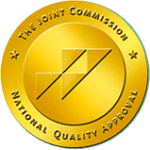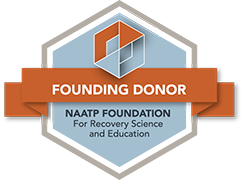What Strategies Are There to be More Mindful in the Present Moment?
Author Lawrence Peltz stated in his book titled, The Mindful Path to Addiction Recovery, “Rather than feeling compelled to fall into our addictive behavior whenever we feel the urge, we discover that we can create a gap between impulse and action – we take a breath, feel whatever is behind our urge, and decide whether or not to act on it.”
Mindfulness is a powerful practice that has the ability to transform our entire lives. By practicing mindfulness, we are opening up our perspective to non-judgmentally experience the present moment as a human being – we soak in the thoughts, feelings and experiences without being driven by them. Mindfulness has evolved over the past 20 years or so, but has been around for many, many years originally as part of Buddhist teachings. It has made its way into the Western world, however, as so many people have discovered the healing benefits of this practice.
Types of Mindfulness Meditation
There are two main ways to practice mindfulness: formally and informally.
Formal Meditation Practices
Formal practices involve meditation, which is a mental training practice that could involve any of these:
- Mental imagery – imagining a vivid representation of your beliefs, desires, experiences or goals. Many people find that by doing this, they are more easily able to manifest their dreams because they’ve seen it happen and that it’s possible.
- Breathing practice – focusing on the inhale and exhale of your breath and how your body moves to these breaths is one way of tuning into the present moment. The rise and fall of your belly, the feel of air entering your nostrils and leaving your mouth – it’s all part of being present in the “here” and “now”.
- Awareness of body and mind – exploring how your thoughts translate into physical sensations can give you great insight on your daily experiences. If you have a lot on your mind, how does your body feel? Are your shoulders tense? Do you have a headache? The more in-line we can make our mind and body, the better we’re able to employ healthy practices to maintain our health.
- Muscle and body relaxation – beginning with your toes, tighten them and relax them while witnessing how these actions feel. Move onto the heels of your feet, followed by your ankles, and slowly move up your body – tightening and relaxing each section as you mindfully soak in the present moment with your body.
- And more
Informal Meditation Practices
Informal practices can be done anywhere, anytime. You can use these all throughout the day to give yourself a “check-in”. Here are some examples:
- Recognizing how it feels to actually brush your teeth and feeling the toothpaste/cold water run through your mouth, along with the bristles of the tooth brush.
- Really feeling the warm water you’re using when washing dishes and being fully engaged in how it feels to hold the dishes and to dry them.
- Hugging someone in such a way that you’re with them in the present moment, feeling the warmth of their body against yours and the sheer love that is being transferred from one another.
- Going for a walk and noticing the crunch of the leaves beneath your feet, the bright blue sky overhead, the birds chirping in the distance, and the breeze that’s brushing across your face as you walk.
Mindfulness and Addiction Recovery
Mindfulness is something that can and should be practiced by everyone, but there are particular benefits to those in addiction recovery. Mindfulness can greatly help with relapse prevention by giving those in recovery the tools they need to recognize painful thoughts, feelings or circumstances and how these instances are affecting the mind and body. Mindfulness can also help in reducing some of the symptoms associated with addiction and mental illness; pain, anxiety, depression and more can be reduced through dedicated mindfulness practice.
In 2014, researchers published a study in the Journal of Consulting and Clinical Psychology that sought to explore the effectiveness of mindfulness for those recovering from opioid addiction and chronic pain. A total of 115 people participated in the study and were randomly assigned to either an 8-week program of mindfulness training or a support group. After assessing the results from both before, during and 3-months after the study, the authors found that those who had participated in mindfulness training experienced significantly greater reductions in pain severity, along with significantly less stress arousal.
Furthermore, a 2016 study titled, “Mindfulness-Oriented Recovery Enhancement Versus CBT for Co-Occurring Substance Dependence, Traumatic Stress…” confirmed that mindfulness practice can greatly help those with co-occurring disorders, which occurs when a person has both a substance use disorder (SUD) and a mental illness at the same time.
Mindfulness is a truly transformative practice, even alongside other highly successful interventions such as 12-Step Programs, cognitive behavioral therapy (CBT), and more.
Don’t wait any longer; begin the journey towards recovery today. Hope is not lost, and healing is right around the corner.
This is the year to change your life from suffering due to the disease of addiction to thriving in the sunlight of the spirit of sobriety. As the world’s first 12-Step treatment center, established in 1939, High Watch Recovery is dedicated to educating patients on 12-Step principles, actions, philosophies, and lifestyles, preparing them to live a happy and healthy sober life after graduating. For information on our continuum of clinical care and our compassionate approach to treatment, call us today: 860.927.3772.








